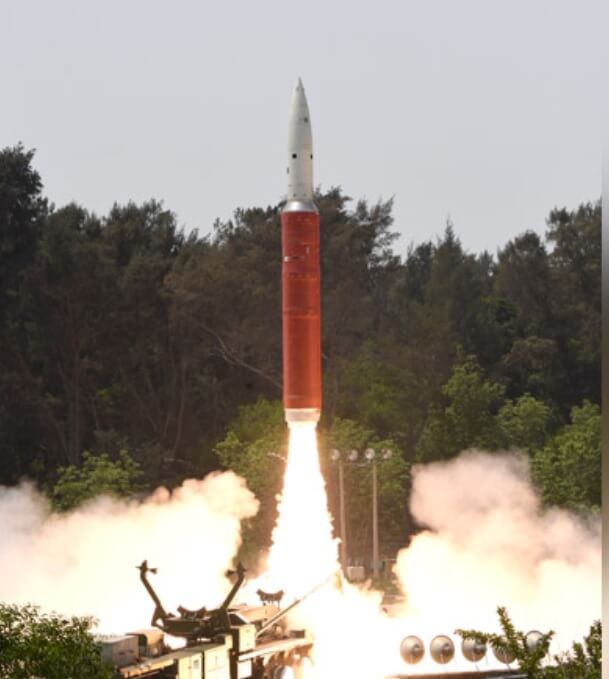India has conducted the Anti-Satellite (ASAT) test shooting down of one of its own spacecraft, using a missile interceptor system. Prime Minister Narendra Modi noted that the interception, under a project codenamed Mission Shankti, destroyed an orbiting satellite. In doing so he declared that India was a world space power.
The mission was later confirmed to have destroyed the Microsat R satellite, which was launched in January, on the morning of 27 March. The test was conducted by the Defence Research and Development Organisation (DRDO), using one of India’s Ballistic Missile Defence interceptors. The launch of the interceptor missile, called the Prithvi Defense Vehicle Mk II (PDV-II), took place at 0546 GMT from DRDO’s test range at Balasore, Odisha, south-West of Kolkata (Calcutta).
The PDV-II is reported to be a three-stage vehicle consisting of two solid propellant boost stages and a “hit-to-kill” element using liquid propellant terminal guidance thrusters. The first stage of the missile separated at an altitude of 45 km and the second at 110 km. The kill vehicle did not contain any explosive warhead and Microsat R was destroyed after it struck the target at the centre of the spacecraft about three minutes after launch. US Space Command has since tracked 270 pieces of debris from the collision.
The test, while a surprise, was originally mooted by the DRDO in February 2010 when it started the ASAT programme. India says it needs this advanced technology as it remains at loggerheads with its near neighbours, including the dispute with Pakistan over Kashmir and over terrorism. In February, a Pakistani F-16 fighter and an upgraded Indian Mig-21 fighter were both shot down during an air battle in the skies over the region. Meanwhile, China remains India’s most powerful regional competitor and its rival in their own space race.
ASAT missile interception tests have been conducted since the 1980s. China received international protests after it conducted an ASAT test against Feng Yun 1C, which caused a large increase in space debris. The US Navy followed up with its own Standard Missile-3 satellite interception test (dubbed “Operation Burnt Frost”) against one of its own satellites at circa 300 km. It attempted to dress this up as a way of dealing with a re-entry survival, and thus impact hazard, of frozen propellant in a stainless steel tank, but the move was viewed by others as more of a riposte to China.
Apart from the size of the debris cloud, one key factor in determining how hazardous any remaining debris might be is altitude. India’s test was against a “low LEO” satellite at circa 272 km altitude, meaning that its debris will rapidly decay. The Chinese interception test was against a much higher orbiting satellite in a near polar orbit at circa 865 km – hence the debris will stay around for much longer as it slowly falls through lower orbits, presenting a crossing hazard to satellites operating there.
Post Script: Astrophysicist and orbital expert Dr Jonathan McDowell has complained on Twitter that the world’s inexpert media has described this incident as a satellite being “shot down”. McDowell points out that the debris usually remains in orbit at least for a few months after such an event. Instead of saying that the satellite was “shot down” by the missile interception, he amusingly suggests that media should instead report that the satellite was “smashed up real good”.
By the way, while we have eschewed that one, Jonathan will nevertheless be thrilled to bits with our since corrected headline.
Update on 4 April 2019: Calling the Indian ASAT test a “terrible thing”, NASA Administrator Jim Bridenstine has noted that the immediate debris hazard to the International Space Station (ISS) had risen by 44 per cent as a result of the test. Of the debris pieces so far identified 46 have been blasted upwards above that of the ISS orbit of circa 400 km. Bridenstine did however concede that the ISS would still be able to steer its way out of trouble and that the low Earth orbit was self-cleansing due to atmospheric drag causing any debris to have a relatively quick orbital decay.








